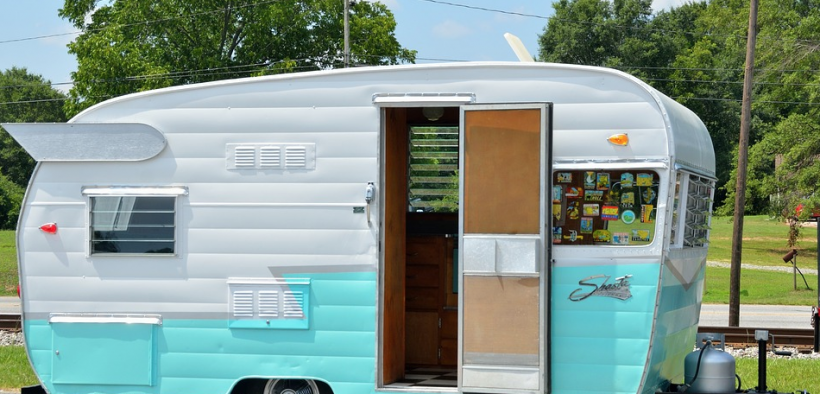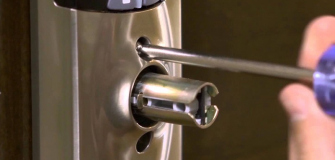4 Things You Need to Know Before Hitching up a Trailer for Your Vacation
Share

A spacious travel trailer will haul enough of your vacation’s most important creature comforts for any vehicle to feel like a true roaming home away from home. Hitching everything up isn’t necessarily complicated, but attention to safety and a consistent checklist of steps is always crucial. Poor attachment risks catastrophic damage to you, your vehicle, the trailer and everything inside. However, minding the details should leave you with nothing to worry about along endless stretches of open roads, campsites and tourist traps. Here are four vital things you need to know before hitching up a trailer and hitting the road.
Supplies
A soundly prepared checklist followed to the letter practically guarantees a uniformly correct hitch-up on every trip. The best process will usually be one you tailor to your own rig’s needs with all essential supplies in place at all times, including a few items for quick trailer repairs.
A can of WD-40 spray will keep the front jack lubed to manufacturer specifications, but a classic grease gun may be better suited to coating the hitch ball and receiver with high-friction grease. A towel and apron are always good to keep on hand for cleaning up slippery excess grease and keeping lubricants off your clothes. A sturdy set of rubber blocks provide ideal traction and stabilization between the ground and jack while unhitching and are absolutely necessary for safety. Brightly colored, sturdy duct tape that resists grease and moisture reliably can clearly mark your tools and prevent them from getting lost, but it can also mark the correct chain links on your sway-control arms. As a final precaution against strained muscles and other injuries while manually maneuvering a massive trailer, a bottle of ibuprofen never goes amiss.
Hitching
Before hitching up, close and secure all windows, vents, hatches, and awnings. Put away any antennas. Place all trip essentials inside the tow vehicle and secure the trailer’s contents before closing and locking the trailer door and raising the steps and stabilizers. Check that wheel chocks are secure and snug up to the wheels. Once you remove any hitch locks and flip the receiver latch up to the open vertical position, raise the trailer’s front end with the jack. While you’re at it, this is a great time to lubricate the jack piston.
Next, place the hitch near the hitch receiver, lift with safe form and slide it gently into place. When you insert the linchpin, be absolutely certain it remains completely secure at all costs to avoid the trailer suddenly falling off the vehicle entirely. From there, you can apply some fresh grease to the hitch ball with your gun before moving on to the linking process.
Linking
It’s a good idea to have a “spotter” who can direct your driving as you back the truck into place so everything lines up as squarely with the trailer as possible. Begin the linking process by engaging the safety break before turning the engine off. This way, nothing is likely to move around unexpectedly. If your trailer has them, weight-distribution or sway-control bars will keep the weight even between the vehicle and trailer by creating tension in the connection and some resistance to steady the trailer in the wind.
Your bars likely attach via chains ratcheted in place that much be properly attached at the right links before you lock them securely into place. Attach the bars completely before you lower the trailer. Securing them only gets more difficult the lower the trailer gets. With the sway bars in place, lower the trail until the ball receiver fully encloses the hitch ball and lock the ball down by flipping the receiver latched closed.
You can now fully raise the jack and set the blocks aside. Once you wipe any stray lubricant off the blocks and bottom of the jack foot, you can seat and connect your light and brake cables after blowing out any dust from them to keep corrosion and wear to a minimum. Next, connect the emergency brake release. This mechanism will automatically engage the trailer’s brakes if it separates from the vehicle and attaches to the hitch receiver’s safety chain loops.
Unhitching
Comparatively, unhitching the trailer is fairly simple. The first step after parking is placing the wheel chocks for a snug fit on each side. Find a flat, solid area before you lower the jack and place clean, dry rubber pads squarely where it will descend. Keep the foot dead-center on the pad and run just until the trailer lifts up and pauses. Once everything is steady, you can disconnect the emergency chains, brake cable and emergency brake controller. That being done, lift the trailer high enough with the jack to lower the sway bars’ tension enough that they can be uncoupled. Lower the trailer enough to put some weight on the vehicle once the bars are free before lifting the ball receiver lock to release the hitch.
At last, you can uncouple the trailer. Lift the trailer with the jack completely up and off the ball. Too much tension between the trailer and vehicle may merely lift the trailer instead of actually freeing it. In such a case, lifting the trailer too high my destabilize it and let it slip from the jack footings. You can free the ball safely by putting one foot on the hitch and gently pushing down or having someone else carefully enter the vehicle and shift it out of park to ease any remaining tension. After the trailer is free, you can then drive the vehicle forward and move the trailer into a level position with the jack.
The better care you take of your trailer, the more dependably it will suit your vacation needs for years to come. Hitching yours up does not have to be complicated. It might be time-consuming and detail-oriented, but there is little a capable driver cannot handle alone. That being said, an extra set of eyes and hands almost always makes the whole ordeal that much faster and easier. Always ask for help from someone experienced in hitching and driving a trailer if you are looking for extra advice.













